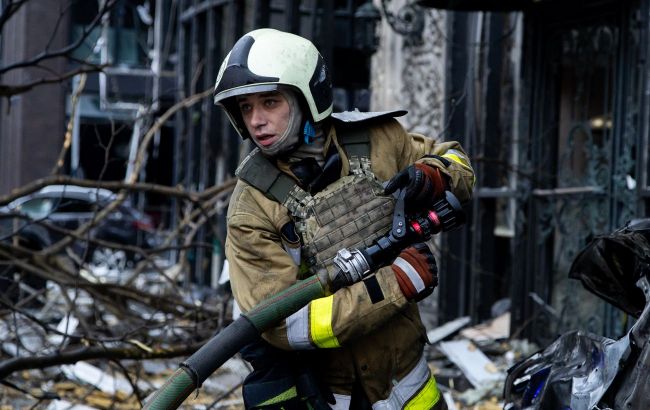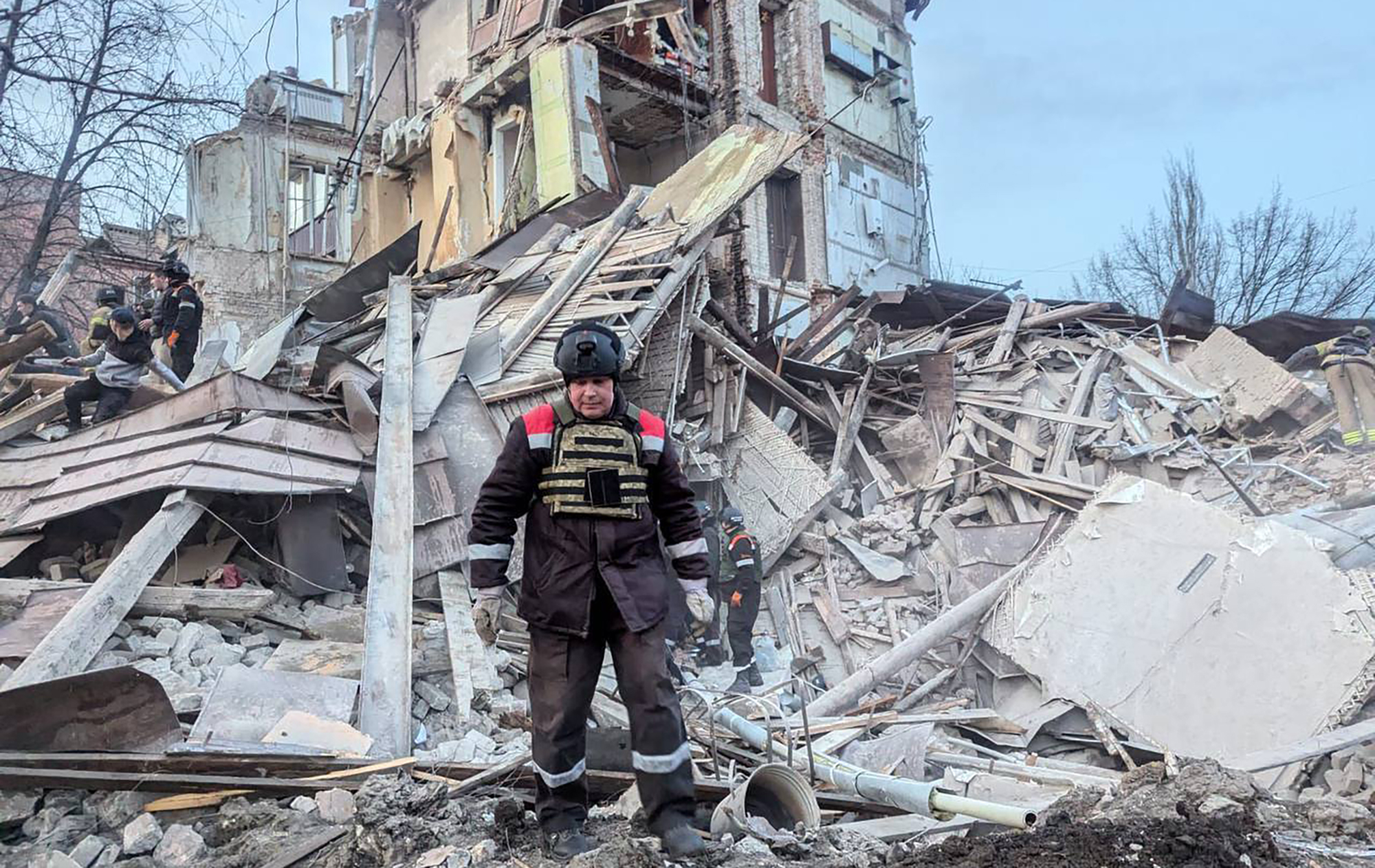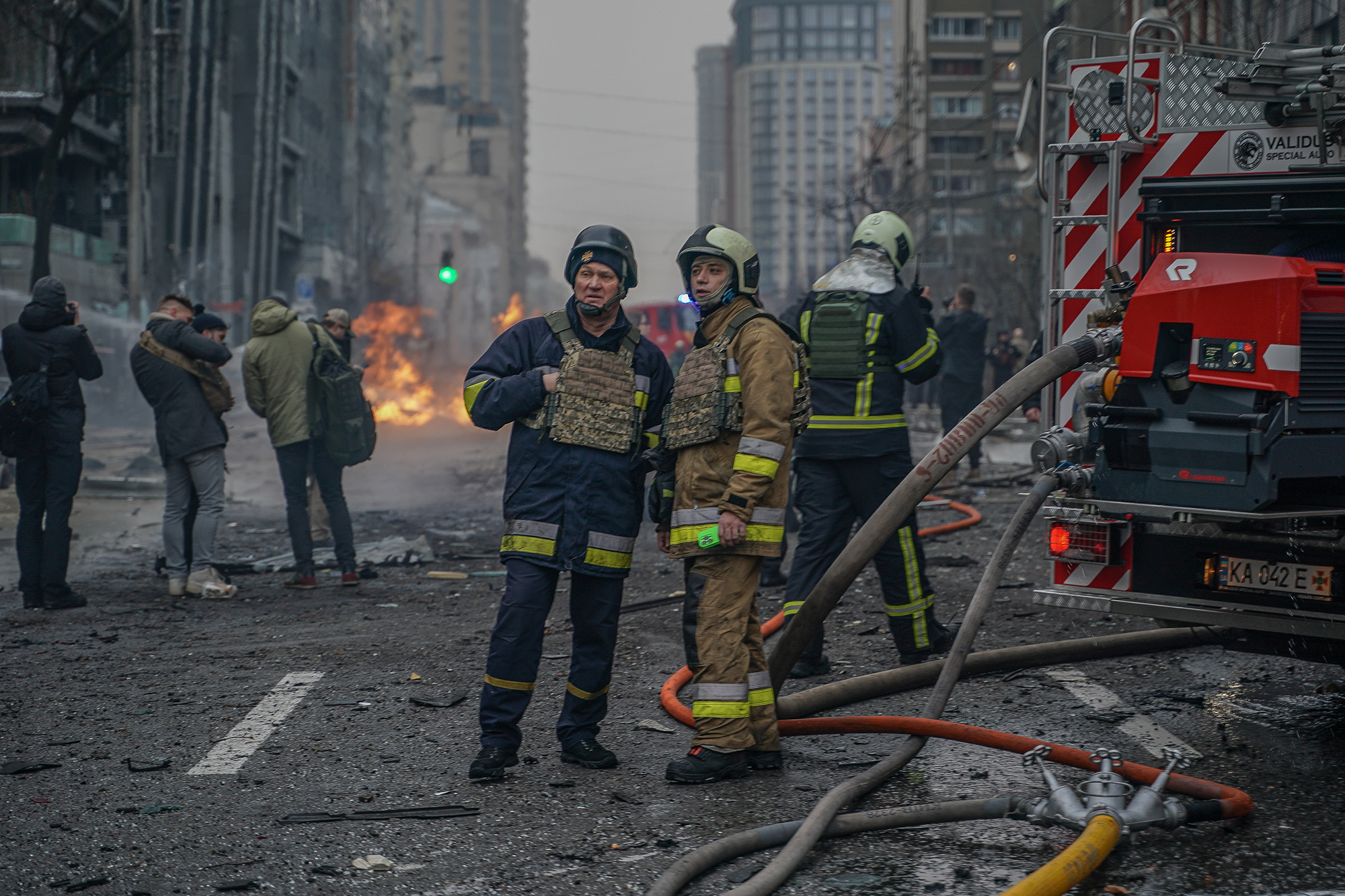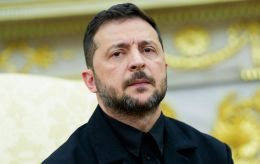Kremlin's tactics: What targets Russia attacks and can Ukraine destroy its aircraft?
 Rescuer extinguishes a fire after arrivals (photo: Getty Images)
Rescuer extinguishes a fire after arrivals (photo: Getty Images)
Whether Russia has changed the targets of its massive strikes, why the Russian army attacks with dozens of drones every day, and whether Ukraine can influence Russia's ability to launch massive strikes - read in the RBC-Ukraine's article.
For almost three years now, Russia has been massively striking Ukrainian territory. During this time, the Kremlin has identified its targets: military facilities, the military-industrial complex, logistics, and energy infrastructure. Massive Russian strikes have already marked the year 2025, but this time the missiles were aimed not only at the energy sector but also at the gas infrastructure.
Ukraine is trying to respond to the Russian strikes, but it is not doing so in an equivalent way. The Ukrainian military-industrial complex is not yet able to produce long-range missiles on a massive scale, and Western allies are still not providing Kyiv with long-range weapons. That is why the Ukrainian military uses long-range UAVs to hit oil refineries, oil depots, military-industrial complex and air defense facilities.
Russian targets
On January 14-15, Russia fired a large number of missiles at Ukraine for the first time since the beginning of the year. The Ukrainian military shot down 77 targets: 47 attack UAVs, 23 Kh-101 and Kh-55m missiles, 3 Kalibr cruise missiles, and 4 Kh-59/69 air defense missiles. In addition, the Russians used an Iskander-M or KN ballistic missile, which, according to reports from the Ukrainian Air Force, failed to shoot down.
This is far from the most massive strike, but this time, in addition to their usual targets, the Russians focused on Ukraine's gas infrastructure, as reported by Naftogaz. A short time later, the company said that gas supplies were continuing uninterrupted and that the consequences of the attack were being eliminated.
Russia has attacked gas infrastructure before. The gas storage facility in Stryi, Lviv region, was often targeted. But this time, the Russian army attacked several gas storage facilities and compressor stations across Ukraine.
 Consequences of the Russian strikes (Photo: Getty Images)
Consequences of the Russian strikes (Photo: Getty Images)
In its report, the Russian Defense Ministry stated that the strikes on Ukrainian gas were a response to similar attacks the day before. On the night of January 13-14, Ukraine carried out one of the most massive attacks on Russia - Ukrainian drones hit facilities in 12 regions, including the Russkaya compressor station in Krasnodar Krai. But the Russians have been attacking Ukraine's gas storage facilities in one way or another since the second half of last year, so this cannot be called a response.
The first attack of 2025, according to experts, was prepared in a hurry and may have been a reaction to an attack on Russia, says aviation expert Valerii Romanenko.
“First, it was a kind of quick reaction to the Ukrainian attack. Because the way Engels was burning was visible on social media, even if the media kept silent about it. The Russians had to respond. They did, so to speak. Second, the strike was prepared in a hurry. It was practically without ballistics, just one missile, and it was aimed at the frontline Kharkiv. They raised the MiGs, but there were no launches. Tu-95s were fired mostly with Kh-101 missiles, but they also launched a missile with a simulated nuclear warhead, that is, with an iron block on board,” the expert said in a commentary to RBC-Ukraine.
The Russians will continue to fire at Ukraine, using all their stockpiles of missiles and drones. Experts identify three main targets of the attacks: the military-industrial complex, the logistics routes through which the Ukrainian Armed Forces supply weapons to Western partners, and the energy infrastructure. This is not to mention the constant shelling of the positions of the Ukrainian Defense Forces in the frontline areas.
Ukrainian energy facilities have been under attack by the Russians since October 2022, and although this does not bring them much results on the battlefield, the Kremlin persists in hitting thermal power plants and transformers.
“They are looking for other ways. First, they hit power plants and transformer stations. They destroyed almost all thermal and most of the hydroelectric power plants. So they realize what they are doing now. They are hitting transformer stations, but we can restore them. They are hitting transformers and high-voltage lines, hitting the periphery of nuclear power plants. They believe that this way they will disable the Ukrainian energy sector, so they continue this,” Romanenko added.
 The aftermath of the Russian strikes on Ukraine (Photo: Getty Images)
The aftermath of the Russian strikes on Ukraine (Photo: Getty Images)
So far, there are no signs that Russian tactics will change. One way or another, the strikes will continue until the turning point on the military or diplomatic fronts, but the Russians may pause attacks on energy infrastructure for a while, said military expert, Major in the Armed Forces of Ukraine, Oleksii Hetman.
“Now, I think they will not focus their attacks on this, because the rest of the winter should be warm. There will be no big cold weather. On the positive side, more than half of the winter is over. Therefore, I think they will focus on our production facilities where we make weapons,” Hetman said in a comment to RBC-Ukraine.
In between the strikes, Russia attacked Ukraine with a large number of drones - since September, there has been virtually no day when Ukrainian cities have not been attacked by UAVs. There are 2 main goals of such daily attacks: to deplete Ukrainian air defense and to keep the civilian population under stress. However, given the fact that drones are mostly targeted by anti-aircraft machine guns, the Russians will not be able to deplete the Patriot.
“As for these Shahed attacks, if something lands, they are already rejoicing. For them, it is a success if some fragments hit. They do not set any big goals, especially since many drones are false targets, made of plywood, and simply exhaust our air defense,” noted Hetman.
However, Russian drone attacks should not be underestimated - drones that fail to be shot down often reach residential areas and hit homes, terrorizing the Ukrainian population.
Ukrainian attacks on Russia
Ukraine regularly attacks Russian oil refineries and military infrastructure. While at first, these attacks did not find support among Ukraine's partners, who called for them to be stopped and not to worsen the oil situation in the world, today's strikes on refineries do not raise such concerns.
One of the most powerful attacks took place on January 13-14. In addition to the gas storage facility, the Ukrainian military attacked many other facilities, including the Saratov Oil Refinery, Kazan Orgsintez, the Kremniy plant in Bryansk, and the main oil pumping station in Kaleikino, Tatarstan. The radius of the attacks was quite wide, indicating that Ukraine's ability to strike deep into Russia is growing.
These strikes are necessary to reduce Russia's military potential and inflict financial losses on it. However, it is difficult to say whether drones can be used to land Russian aircraft and thus significantly reduce the risk of massive attacks.
_1_1.jpg) The Kristall base in Engels (photo: social media)
The Kristall base in Engels (photo: social media)
According to experts, it will not be possible to reduce the strikes to zero - the planes are too far away for Ukrainian drones to reach them, but we can try to limit their fuel supplies at least for a while.
“We can continue to hit oil refineries, chemical plants that process certain fuel and lubricant components so that they become rocket fuel or fuel for strategic bombers. It is impossible to simply make sure that they cannot take off at all. Russia is a gas station country, it will be difficult for us to destroy everything. They have their oil. We will destroy everything, and they will pump it up and produce it again,” Hetman said.
The planes from which the Russians attack Ukrainian territories are mostly based at the Olenya, Engels, Diaghilevo, Shaikovka, Savasleyka, Akhtubynsk, and Mozdok airfields. Strategic bombers are stationed at the Olenya airfield, which is technically difficult to reach. A portion of the Tu-22 bombers is kept at Dyagilevo, which we can reach, but there are quite a few of them.
“Dyagilevo has the infrastructure to service all types of strategic bombers, but it is minimal because it is a training center. As for a few Tu-22s, they can service one squadron,” Romanenko said.
If we try to limit their fuel supply, we can hit Engels, which is what the Ukrainian military is doing. Among other things, it produces fuel for the Tu-160s, but they are rarely used to strike Ukraine. Another plant in Engels is the Kombinat Kristall plant, which is part of the state strategic reserve and stores fuel for Tu-95MS and Tu-160 aircraft. On January 8, Ukrainian forces already attacked the base, and the attacks are likely to continue. This will not reduce attacks on Ukraine, but it will create certain difficulties for the Russians, says Oleh Katkov, editor-in-chief of Defence Express.
“The defeat of this oil depot will complicate the operation of this air base, but it will not make it impossible. Russia will spend additional resources on it. It also contained specific T-8V fuel, which is needed for Tu-160s, which are the only consumers of this fuel. The possible destruction of part of the stockpile of this fuel could lead to a decrease in the activity of Tu-160s, but they were already used by Russia to a limited extent to strike Ukraine,” Katkov said in a commentary to RBC-Ukraine.
Russia is spending huge resources on massive attacks on Ukraine. During almost 3 years of full-scale invasion, Ukrainian air defense forces have learned how to fight back and minimize damage from combined Russian strikes. The Kremlin is also learning, so it is using every opportunity to deplete Ukrainian air defense, from confusing missile routes to the dominance of drones.
The strikes are likely to continue, so it is important for Ukraine not only to receive steady supplies of ammunition from its Western allies but also to maintain and increase the number of military personnel specializing in air defense

